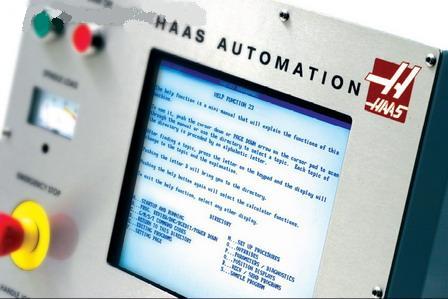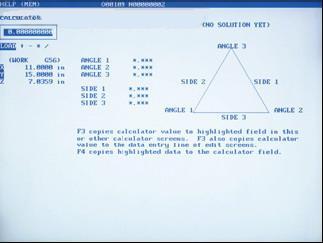Undoubtedly, CNC technology has greatly increased the productivity of today's machine tools, or that those interfaces, such as Haas control, make them easier to operate than before. However, some things have not changed. Although the CNC has put unprecedented capabilities and precision in front of you, the criterion for determining whether a mechanic is qualified is still "work is done." In Haas, the "computer" part of the CNC is the essence. In the gray box of the same specification, there is a wealth of practical information and carefully configured wealth that can help you get the job done.
Now, we want your attention to focus on the HELP/CALC button. You will find it in the lower right corner of the DISPLAY button group in the middle of the keyboard. Press this button once and you will see a 27-page mini manual that outlines almost all the functions on your machine.
The first page, titled HELP FUNCTION, shows a complete list of all topics and a brief description of how to find them. If you want to view each topic in order, simply use the cursor keys or the handwheel to page down. Alternatively, use the alphanumeric keyboard to enter the one-letter ID of the subject to jump directly to the corresponding page. The title of most topics does not need to be explained too much. If you need them later or just when you need them, you can quickly see what information they contain.

In the latest Haas controllers (since June 2005), the Help item has become easier to use. The same Help start page gives an overview of the information, but you can still find the topic or words in the Help manual. This is the same as the Help item on your desktop computer.
Press the HELP/CALC button a second time to go directly to the CALCULATOR page. Here you can see 5 interesting screens that make it easier to machine linear motion, circular motion, speed and feed programming. Use the PAGE UP and PAGE DOWN buttons in the cursor group to enter the calculator.
There is a simple math calculator in the upper left corner of each calculator page. The value is entered via the numeric keypad and the WRITE/ENTER key, and the left and right cursor keys are used to select the desired calculation function (LOAD, +, -, *, /) to make it highlight.
To perform a simple calculation, highlight the LOAD function first, then use the keyboard to enter the value and press the WRITE/ENTER key. After that, highlight the desired math operation (+, -, *, /) and enter the second value via the keyboard. This operation can be performed by pressing the WRITE/ENTER key and the result of the calculation will be displayed in the calculator box. To perform multiple steps in sequence, simply repeat the above process.

In the base calculator you can also enter longer mathematical equations in the input line, such as 0.25*8/0.25+4-2. When there are multiple steps in a problem, highlight the LOAD function and enter the entire equation (0.25*8/0.25+4-2), where both numeric and operator inputs use the numeric keypad. After inputting, press WRITE/ENTER to execute this calculation (=10). The order of calculation of the equation is to do multiplication and division first, and then do the rest of the operation.
This built-in calculator has the advantage of allowing you to copy or paste the results directly into the program you are editing, or you can copy or paste it into a dedicated calculator that we will discuss later. You don't need to manually transfer data, which avoids the risk of errors when re-entering data. We will explain this in detail later.
In addition to the base calculator in the upper left corner, this section also has four dedicated calculators to help solve the triangle, circle, tangent, and speed and feed problems in the trigonometry.
The first page is the triangle calculator. Enter the corner value of your triangle problem. When the input data is sufficient, the computer will calculate the triangle and display other values. Use the UP and DOWN arrow keys to choose where to enter your value. Then use the numeric keypad and the WRITE/ENTER key to enter the value. You can override the highlighted text because it is an already calculated value. To enter a new value to override that calculated value, you must clear the other entered value. This can be done by pressing SPACE and then pressing ENTER.
Next page
We diviided the led light according to the using eviiroment. Most of our product is the commercial LED Lighting
Commercial lighting is a term used to describe lighting that is used in commercial spaces, including auto dealerships, distribution centers, churches, factories, offices, and warehouses. Unlike residential lighting, commercial lighting is made to withstand more abuse and has a longer lifespan.
While the focus of residential lighting is often on aesthetics, commercial lighting is task orientated. Commercial lighting systems are designed based on what the application is. For example, in an office-type setting, you may see task lighting, which illuminates specific areas where employees need concentrated light to be able to perform their jobs.
Bulb Spotlight,Adjustable Spot Light,Exterior Spot Lights,Surface Mounted Spotlights
Jiangmen Dilin Lighting High-Tech Co., Ltd. , https://www.jmdilinlight.com
![<?echo $_SERVER['SERVER_NAME'];?>](/template/twentyseventeen/skin/images/header.jpg)